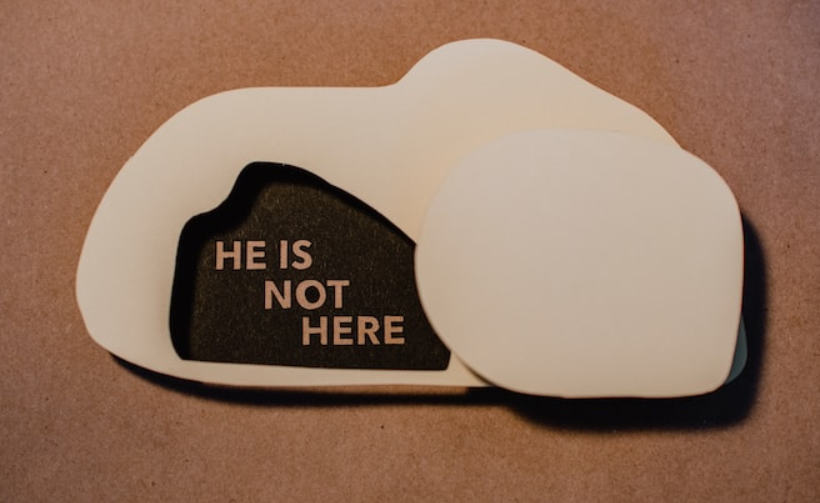Should you follow up on a job application

Are you wondering whether it’s worth following up on a job application? Well, let me tell you, the answer is a resounding yes! Following up on your job application can make a world of difference in today’s competitive job market. Think of it as a way to grab the recruiter’s attention and stand out from the crowd.
So why should you bother with a follow-up? For starters, it shows your genuine interest and enthusiasm for the position. By reaching out to the hiring manager or HR representative, you’re demonstrating that you are proactive and serious about the opportunity. This can leave a lasting impression and give you an edge over other candidates who simply submit their application and wait.
Following up also gives you an opportunity to reiterate your qualifications and highlight any relevant skills or experiences that might not have been evident in your initial application. It allows you to personalize your communication and emphasize why you’re a great fit for the role. Plus, it provides a chance to address any questions or concerns the employer may have had about your application.
Timing is crucial when it comes to following up. You don’t want to appear pushy or desperate, but you also don’t want to wait too long and risk being forgotten. Aim to follow up within one to two weeks after submitting your application. This timeframe strikes a balance between showing your interest and giving the employer enough time to review applications.
When crafting your follow-up message, keep it concise, friendly, and professional. Address the recipient by name, express your continued interest in the position, and briefly remind them of why you’d be a valuable addition to their team. Remember to proofread your message carefully to ensure it’s error-free and polished.
Unveiling the Impact of Job Application Follow-Ups: Inside Perspectives from Hiring Managers
Have you ever wondered about the true power of job application follow-ups? What if I told you that a simple and timely follow-up could significantly impact your chances of landing that dream job? It’s time to delve into the minds of hiring managers and uncover the secrets behind this often underestimated strategy.
Picture this: You’ve spent hours meticulously crafting the perfect job application, tailoring your resume and cover letter to showcase your skills and experiences. But here’s the thing – your application is just one among many in a sea of candidates. How do you stand out?

This is where the art of the follow-up comes into play. By reaching out to hiring managers after submitting your application, you demonstrate initiative, enthusiasm, and a genuine interest in the position. It shows that you are proactive and determined to make an impression beyond the initial submission.
Now, you might be wondering how soon is too soon or how late is too late to follow up. Timing is crucial! Ideally, send a follow-up email within 24 to 48 hours of submitting your application. This timeframe allows hiring managers to review applications while your name is still fresh in their minds. Remember, you want to strike a balance between being eager and respectful of their time.
When crafting your follow-up message, keep it concise yet impactful. Remind the hiring manager of your application and express your continued interest in the position. Highlight any relevant achievements or skills that make you a strong fit. By doing so, you refresh their memory and reinforce your qualifications.
Here’s a pro tip: Personalization goes a long way. Take a moment to research the hiring manager or the company to include a personalized touch in your follow-up. Reference a recent achievement or project they’ve been involved in and explain how you can contribute to their success. This not only captures their attention but also demonstrates that you’ve done your homework.

Job application follow-ups are more than just a formality. They provide an opportunity to leave a lasting impression on hiring managers and differentiate yourself from other candidates. So, don’t underestimate the power of a well-timed and thoughtfully crafted follow-up. Take that extra step, seize the opportunity, and increase your chances of securing that coveted job offer.
Unlocking Success: The Power of Job Application Follow-Ups Revealed
Have you ever wondered what sets successful job applicants apart from the rest? Is it their qualifications, experience, or maybe just sheer luck? While these factors certainly play a role, there is one often overlooked strategy that can significantly boost your chances of landing that dream job—the power of job application follow-ups. In this article, we’ll delve into why following up on your job applications is crucial and how it can make a remarkable difference in your career.
Picture this: you’ve submitted a meticulously crafted resume and cover letter, showcasing your skills and enthusiasm for the position. Now, the waiting game begins. Days turn into weeks, and anxiety starts to creep in. Instead of passively waiting for a response, take control of your destiny by following up with the hiring manager. A well-timed follow-up demonstrates your genuine interest and dedication to the opportunity, setting you apart from other candidates who remain silent.
One of the primary benefits of job application follow-ups lies in the impression it leaves on employers. By proactively reaching out, you show initiative, persistence, and a sincere desire for the position. Employers appreciate candidates who go the extra mile and exhibit these qualities, as it reflects their potential performance on the job. Consider it as an opportunity to create a lasting positive impression, even before stepping foot in the interview room.
Moreover, a follow-up allows you to reaffirm your qualifications and emphasize your suitability for the role. Use this chance to remind the hiring manager of your relevant skills, experiences, and accomplishments. Craft a concise yet compelling message that highlights your unique value proposition—a powerful technique to stay top-of-mind amidst a sea of applicants. Remember, your follow-up should be concise, friendly, and professional, leaving no doubt about your commitment and capability.
Timing is key when it comes to job application follow-ups. Wait at least a week after submitting your application before reaching out. This period allows the hiring manager to review applications and shortlist candidates. Once the appropriate time has passed, craft a personalized follow-up message that is tailored to the company and position. Show your enthusiasm for the opportunity while remaining respectful of their time and workload.
The Art of the Follow-Up: How It Can Make or Break Your Job Application
You’ve submitted your meticulously crafted job application. You’ve tailored your resume, composed a compelling cover letter, and showcased your skills and experience. Now what? Is it time to sit back and hope for the best? Not quite. The art of the follow-up can be the differentiating factor that sets you apart from other applicants and can make or break your job application.
Why is the follow-up so important? Think of it as your secret weapon, an opportunity to demonstrate your enthusiasm, professionalism, and dedication. By reaching out to the hiring manager or recruiter after submitting your application, you show that you genuinely care about the position and are proactive in pursuing opportunities.
A well-timed and thoughtful follow-up can leave a lasting impression. But how do you approach it without sounding pushy or desperate? Start by acknowledging the recipient’s time and express your gratitude for the opportunity to apply. Then, briefly reiterate your interest in the position and highlight one or two key points that align with the job requirements.
Remember, timing is crucial. Wait a reasonable amount of time before following up, allowing the employer to review applications. A week or two is generally considered appropriate. When composing your follow-up message, keep it concise, personalized, and engaging. Use an active voice and ask open-ended questions to encourage a response. For example, you could ask if there are any additional materials they would like to see or if they have a timeline for the hiring process.
Analogously, think of the job application process as a race. Submitting your application is like sprinting out of the starting blocks, but the follow-up is akin to maintaining momentum throughout the race. It shows that you’re determined, persistent, and willing to go the extra mile.
The art of the follow-up is a powerful tool that can significantly impact your job application’s success. Don’t underestimate its potential. By utilizing a personalized and engaging approach, you can demonstrate your enthusiasm, professionalism, and commitment to the role. So, don’t sit back and wait. Take that extra step, follow up, and increase your chances of making a lasting impression on potential employers.
Secrets to Mastering the Follow-Up Game: Insights from Job Seekers Who Landed Their Dream Jobs
Are you tired of sending out countless job applications and never hearing back? Landing your dream job can seem like an impossible task, but fear not! In this article, we will unveil the secrets to mastering the follow-up game, as revealed by successful job seekers who have secured their dream positions. Prepare to be amazed as we dive into the strategies that can make all the difference in your job search.
One of the most important aspects of the follow-up game is timing. You don’t want to come across as too pushy or desperate, but you also don’t want to miss out on an opportunity. The key is finding the delicate balance. After submitting your application, wait a few days before sending a well-crafted follow-up email expressing your continued interest in the position. This shows initiative and keeps you on the employer’s radar.
Personalization is another secret weapon when it comes to following up. Generic emails are easily ignored, so take the time to tailor your message to each specific employer. Reference something unique about the company or the job posting that caught your attention. Show them that you have done your research and genuinely care about joining their team.
Persistence pays off in the follow-up game. If you haven’t heard back after your initial follow-up email, don’t be discouraged. It’s perfectly acceptable to send a polite reminder after a week or two. This demonstrates your enthusiasm and determination. Remember, sometimes employers are simply overwhelmed with applications, and your gentle nudge could be just what they need to take notice.
But how do you know when to stop following up? It’s a fine line between being proactive and becoming a nuisance. As a general rule, if you’ve sent three or four follow-up emails without any response, it may be time to move on. Focus your energy on other opportunities instead of fixating on a single job.
The secrets to mastering the follow-up game lie in timing, personalization, and persistence. By following these strategies, you can increase your chances of standing out from the crowd and landing your dream job. So go ahead, put these insights into action and let the world see your determination and dedication shine through. Your dream job awaits!





